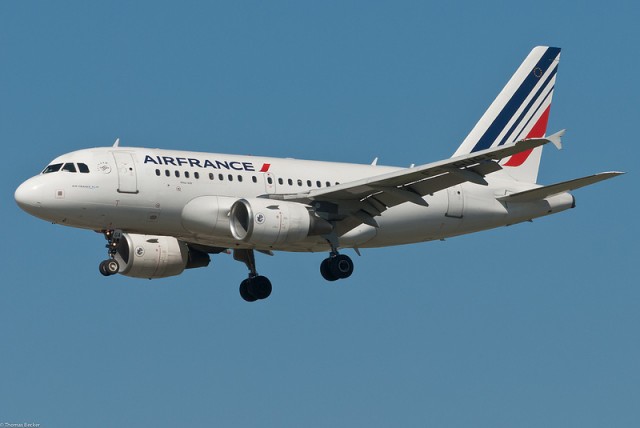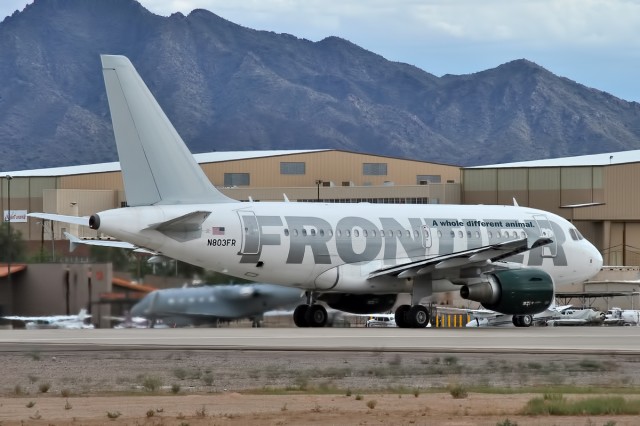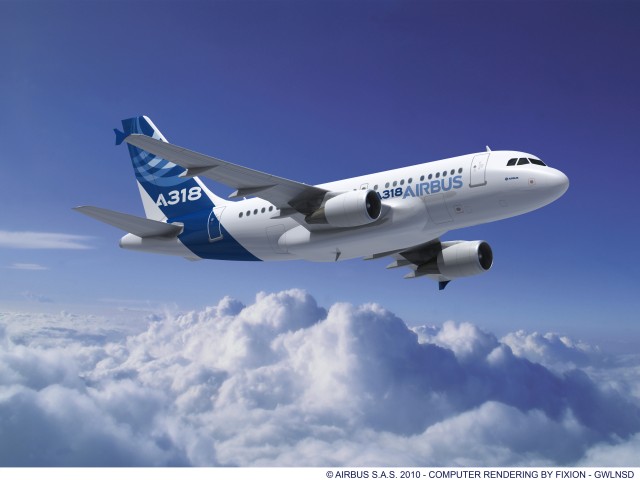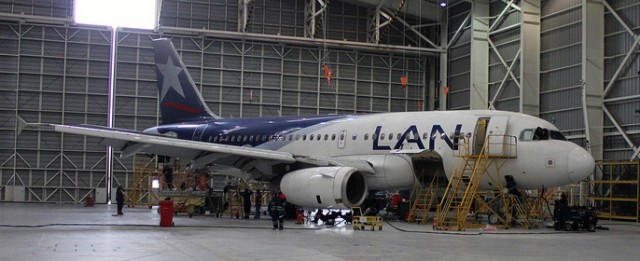
An Air France Airbus A318. The airline is the world’s largest operator of the A318. Photo: Thomas Becker
The last Airbus A318 operated by a North American airline has exited service. The A318, sometimes affectionately referred to as the “Babybus,” is the smallest member of the Airbus A320 family. Weighing nearly the same as its larger brother, the A319, and operating with the same crew requirements, the economics of operating the A318 in North America just didn’t make sense. The similarly-sized Boeing 737-600 has largely suffered the same fate (although WestJet still operates a fleet in Canada).
Frontier Airlines (F9) was the launch customer for the A318, receiving their first bird in July of 2003. They took delivery of 11 copies from 2003 – 2007, but recently they retired their last A318. When asked about the retiring of the young aircraft, a Frontier spokesperson told AirlineReporter.com that, “over the past few years, Frontier€s fleet strategy has focused on increasing the average size of our aircraft, while decreasing the per seat operating cost, in order to provide the lowest fares to our customers. With fewer seats, the cost of operation per seat on the A318 was higher compared with the A319 or A320.”
A318s only remain in service with a small number of carriers, with the bulk flown by Air France and Avianca, and just a few still by LAN and Tarom. A LAN representative told AirlineReporter.com that they are still operating three A318’s (through subsidiaries) but plan to retire those birds by the end of the year. British Airways (BA) also operates a token fleet, using an all-business layout for the London City – JFK route (and utilizing the old Concorde flight numbers).
The fleet choice is not accidental; one of the selling points of the A318 was its ability to utilize small airports. According to an Airbus representative, “the A318 is unique in its own right as it is the largest commercial aircraft certified to land at steeper-than-usual gradients, making it ideal for constrained locations and downtown airports €“ and that means major cost and time savings for business travelers.”
Most of the retired A318s have actually been scrapped; the engines and major components are more valuable parted out than the plane as a whole.
An interesting factoid – the A318 has a taller tail than its siblings, much like the 737-600 and the 747 SP. Those fat, short jets just need the extra stability. Plus, it gave Frontier a bigger palette for their adorable animal branding (unfortunately, when their old A318s was ferried to Europe to be broken up, the tail got “blanked” first).

N803FR, which used to have “Stu” the rabbit, before its funeral flight across the pond. Photo: Billy Ellison/PHXSpotters
We asked AirlineReporter.com readers on our Facebook page how they felt about the A318 leaving North America. While many had flown the F9 birds, most folks were less-than-nostalgic about the Babybus. The best comment goes to reader Lyle Perry, who said the A318, “looks like it got shrunk in the dryer.”
Being Denver-based, I actually flew on a number of F9’s A318s. The were sort of a novelty, but far better than flying on a regional jet. Very easy to load and unload, that’s for sure! I would love to get on one of those BA flights across the pond, though.


Blaine, you said they were flown to Europe to be broken up. They are still generally new planes, is there really no market for second hand gently used baby buses? It seems very, very odd to me with demand for older planes booming in emerging markets.
JL- I can’t really believe it either, but almost all of Frontier’s 318’s have already been broken up – including some that were as new as 2007 models. As far as a can tell, the engines are worth more than the whole damn plane. Crazy, huh?
”An interesting factoid — the A318 has a taller tail than its siblings, much like the 737-600 and the 747 SP. Those fat, short jets just need the extra stability.”
Actually the reason is that the shorter fuselage means there is a shorter moment arm between the tail and the centre of gravity. A larger surface area (resulting in greater aerodynamic force) compensates for that. The resulting amount of stability is the same as on the larger siblings.
You’re right to say that it’s a shorter moment arm, but that’s only half the equation. The tail has to be larger because in the event of an engine failure the tail has to produce that much more force (due to the shorter moment arm) to counter the asymmetric thrust from the operating engine. If you could somehow guarantee both engines would always work you could get away with a much smaller tail.
the cost of operation per hour on a A318 or A319 is almost identical, a318 is now available with sharklets…avianca has 20 air france has 18…lan 3 tarom 4 british airways 2
Hey Everyone, I used to work for Frontier at our BWI station as a CSA, til the company closed the station in 2007. I worked there at the time the 737-300’s were finally being phased out for the new Airbus aircraft, and saw the company become an all Airbus airline. During that time period, all of the A318’s that Frontier flew, except the final 2, were regular visitors to BWI. It was always a treat to see them in, although for the greater part of 2005-2006, the A318’s were the mainstay aircraft being used on the routes to Denver. I loved them, although you always had to be careful when bringing the jetbridge to the front door of the aircraft, as there was not much clearance from the jetbridge and the front of the engine cowling. So you had to ease the jetbridge door over slowly! I can also, remember that the A318, at the time was configured to seat 114 passengers and sometimes the flights would be over booked. Always, a challenge when you had to take care of the extra passengers that showed up! If you flew to Denver on a A318, and your flight arrived at a gate that was on the side of the passenger walkover bridge to Concourse A, you were assured to have a couple minutes of taxi time added to your arrival, as the plane could not taxi under the walkover bridge because the height of the tail prohibited it from taxiing underneath of it. I was sorry to see that Babybus’s leave the fleet. Just wish someone would have picked them up earlier before they headed to the chopping block. But, I still have some fond memories of their operation and the great animals that were on their tails! 🙂
Hey Michael,
Thanks for sharing. They are a special aircraft that just didn’t make financial sense, especially when aircraft, like the E-Jet, came online. I still get excited when I see one, since they are so small!
David | AirlineReporter